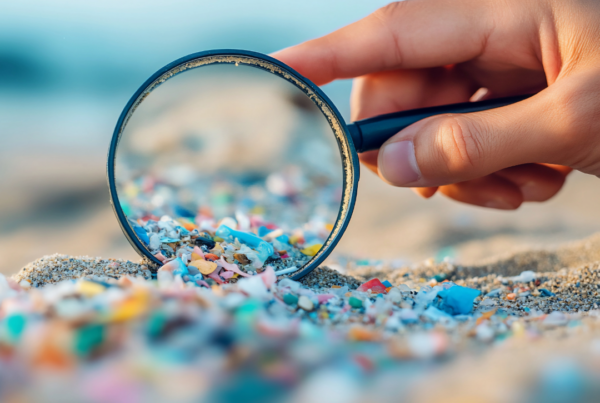Aquapak Polymers, a leader in polymer technology that offers excellent functionality, recyclability and environmental credentials, has partnered with Industrial Physics, a global packaging, product, and material test and inspection partner, to create a harmonised set of WVTR (Water Vapour Transmission Rate) testing methods for its Hydropol™ biodegradable polymer.

Hydropol offers all the benefits of traditional polymer plastics yet is water soluble and completely biodegradable as well as non-toxic and UV resistant. It also offers multiple end-of-life options such as recyclability, compostability and compatibility with anaerobic digestion plants.
Establishing a reliable and repeatable test method for WVTR is an industry-wide challenge. By using equipment designed by Industrial Physics’ product lines, including Systech Illinois, and Testing Machines Inc., Aquapak resolved to find a way forward by partnering with Industrial Physics, which will ultimately provide its customers across a wide range of sectors with a real alternative to using traditional polymers, helping them cut plastic pollution in the process.
Industrial Physics is a global test and inspection partner that works across a wide range of industry sectors to help customers protect the integrity of their packaging, products, and materials. The business is passionate about helping customers move to new, more sustainable packaging materials.
As more organizations continue to strive for sustainable alternatives, it’s unsurprising that demand for Aquapak’s Hydropol continues to grow – this is supported by Industrial Physics’ research that surveyed 255 packaging professionals around the world, highlighting that testing of new sustainable materials was a major challenge they face.
Almost half of the 255 global packaging professionals (49%) surveyed said meeting testing standards was one the biggest challenges they faced in wider adoption of sustainable packaging materials.
An example of this is that current WVTR test methods and standards are based around traditional polymers rather than sustainable, biodegradable alternatives such as Hydropol.
In order to continue their drive towards sustainable innovation in a way that didn’t sacrifice the integrity of their product, Aquapak approached Industrial Physics to support them in developing a repeatable and reliable test method for WVTR (Water Vapour Transmission Rate) for its Hydropol biodegradable polymer.
The WVTR test method is a known challenge for hydrophilic polymers, and the team at Aquapak were looking to utilise knowledge and resources from Industrial Physics to develop a testing method that could be carried out in-house as well as replicated at its customers premises wherever they were in the world.
Max Phippard, Quality Control Manager at Aquapak said: “Allowing the WVTR test to reach equilibrium means that we are confident in the results. Over the last few months, we have carried out full analysis of multi-layer samples to gain an understanding of how our customers can replicate their own WVTR testing regime on Hydropol.”
He continued: “Being able to build a relationship with Industrial Physics and leverage their expertise in packaging barriers was critical to the success of this programme.”
Alan Shema, Product Line Director at Industrial Physics said: “We have reached a point where the WVTR test on Hydropol can be replicated anywhere in the world by using the approach taken by Aquapak and ourselves. This is a major step forward because it will shape how hydrophilic films are tested in future. It allows our global customers who source sustainable packaging materials such as Hydropol to carry out their own WVTR knowing they can trust the results.”
Phippard added: “As highlighted in Industrial Physics’ research, businesses face challenges when looking to switch to new, sustainable packaging materials. Developing a WVTR approach for Hydropol is one of the ways we are supporting our customers as they take this journey.
Industrial Physics offers a range of packaging, product, and material integrity testing solutions to food and beverage, flexible packaging, medical, pharmaceutical, and coatings markets. The company adopts a collaborative approach with customers to help them work through the challenges of moving to sustainable packaging.
Industrial Physics carried out research with 255 packaging professionals earlier this year. Full results can be view at Industrial Physics Sustainable Packaging Research Report.
For more information about Industrial Physics click here.
To find out more about Aquapak, visit: https://www.aquapakpolymers.com/
End.
Notes to editors:
About Industrial Physics
Industrial Physics is a global test and inspection partner. Its purpose is to protect the integrity of customer’s brands and products. Operating across a family of brands, the company has spent almost 100 years providing the highest quality of packaging, product, and material testing solutions for businesses across the world.
Supporting manufacturers, production lines, and laboratories across a range of locations and industries, its experts are positioned across the globe to provide trusted, personalized solutions.
About HydropolTM – Accelerating the transition to the Circular Economy
Hydropol™, developed and produced by Aquapak, is a highly functional, specialty environmental polymer that allows product design to support the circular economy – by enabling recycling and delivering multiple end-of-life options. It is designed to be an alternative to traditional plastics, offering their versatility and functionality but without harming the environment.
As an enabling technology, Hydropol™ can be used on its own or in combination with other materials to enhance recyclability, compostability and end-of-life options. Its material properties allow for scalability into diverse types of products and its solubility makes it easy to separate from other materials when recycling. For example, it can be extrusion coated and laminated onto paper or board giving strength and barrier properties against oxygen, oil and grease then made into alternative mailing bags, dry pet food sacks, window patch boxes and packets etc. To dispose in this instance, consumers can simply put the packaging into their household paper waste. The Hydropol layer is formulated to ‘wash off’ (dissolve) during the paper repulping process and then either biodegrades in the waste-water system or turned into clean energy if the plant has an AD system.



